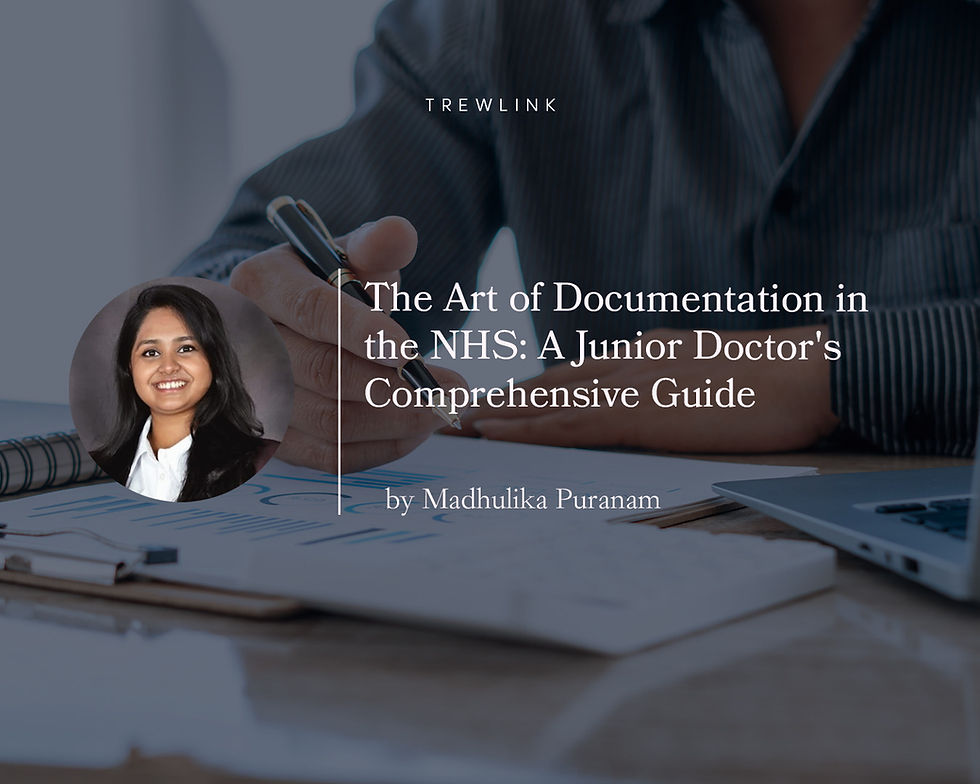The Art of Documentation in the NHS: A Junior Doctor's Comprehensive Guide
- parinaz00
- Dec 4, 2023
- 1 min read
Updated: Feb 19

Documentation is an indispensable aspect of healthcare delivery in the NHS (National Health Service), ensuring accurate recording and accessibility of patient information. As a junior doctor, you play a crucial role in various types of documentation, which can be in paper or digital format depending on your trust and location. We've Moved! 🚀
This blog post is now available on the new TrewLink Community—with even more insights and support!
🔗 Read it here: The Art of Documentation in the NHS: A Junior Doctor's Comprehensive Guide on www.community.trewlink.com
Join us there! 🎉
What’s New? A Smarter, Goal-Directed Platform
We’ve introduced a goal-aligned framework to make it easier to find the right support at the right time. Whether you need:
Advice on GMC registration, jobs, training Peer-to-peer support and mentorship. Structured learning pathways for your career stage mental well-being resources to help manage stress.
Our New Community Hub
Our new platform is your space to:
Connect with fellow IMGs and share experiences. Get expert career guidance and mentorship. Access mental well-being tools to help you thrive in the NHS.
You don’t have to navigate this journey alone—access TrewLink today and take control of your career!

Comments